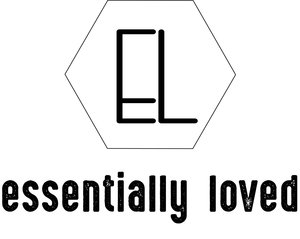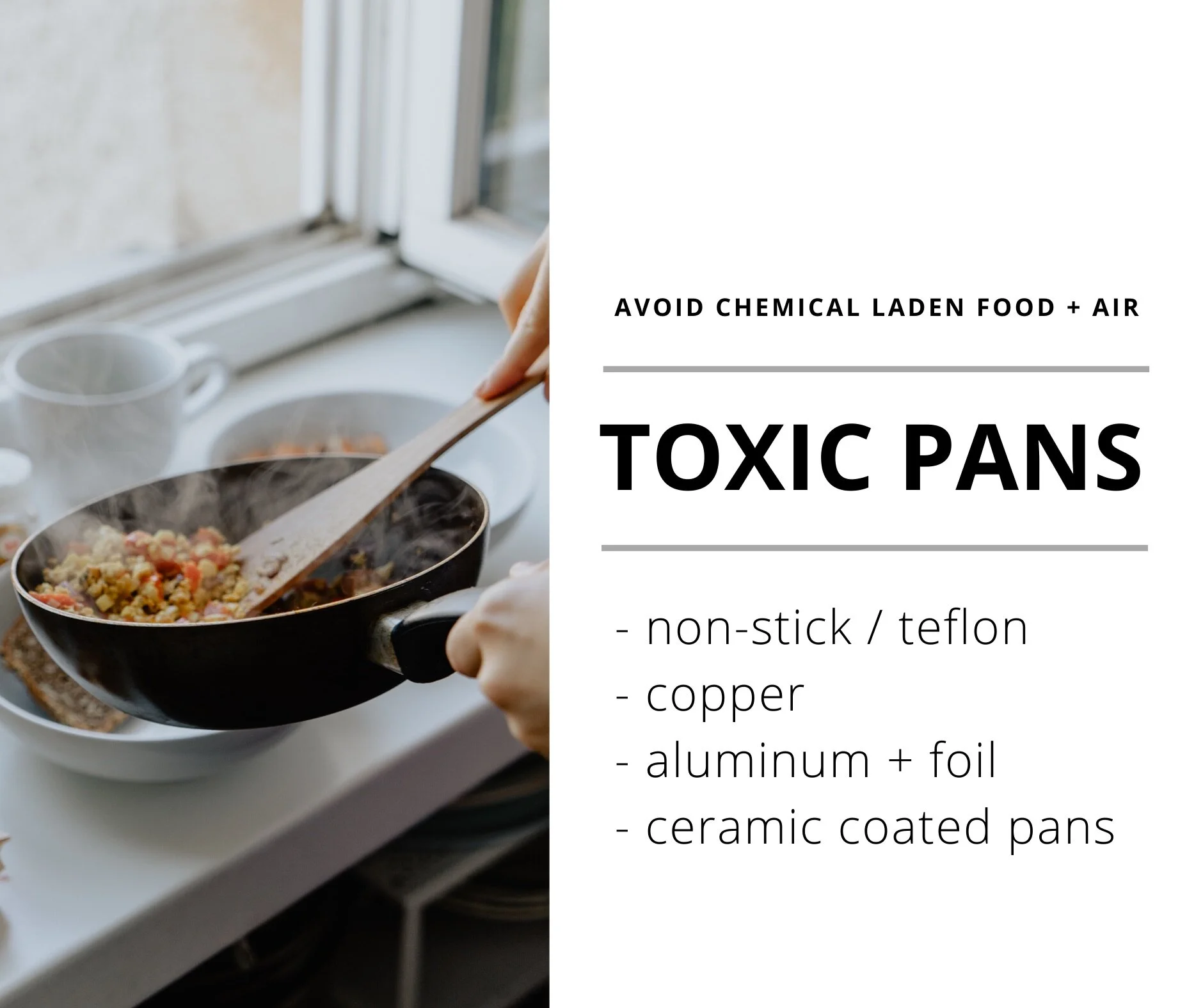Toxins, in the kitchen. Where are they, what do they do? Do the toxins really hurt us that much?
Have you spent much time considering the toxins in your kitchen? I am guessing you have probably taken a look at your cleaners and considered what is included in the ingredients list. If not, that is a great place to begin evaluating on your quest to go toxin free. Prepared to be shocked at what you find. That isn’t what we are covering today though.
Did you know the most harmful way to come into contact with toxins is through ingestion? Anytime we ingest anything, it has a direct route to the bloodstream + begins affecting the body right away.
So is food the only way you introduce chemicals and toxins through ingestion? No, what you cook your food in plays a part too. Pots + pans play a huge role as our food comes into direct contact with it, sits in it, and transform through the process of being exposed to it.
And what about when you’re standing over the food you’re cooking, you are inhaling those gases, Inviting them straight into your body with full access. Using a vent fan can help minimize this, but the ultimate way to avoid this problem of inhaling toxins is by choosing safe cookware to begin with.
Toxic Cookware to Avoid:
1. Ceramic-coated pans
Ceramic pans and cutlery are usually metals coated with a synthetic polymer that is softer than metal. This coating can easily wear off and can only last for about one year. Once the coating begins to wear off and depending on the material beneath the synthetic polymer, toxic metals can begin leaching into your food.
2. Non-stick cookware (Teflon)
Non-stick cookware contains a similar synthetic coating of polytetrafluoroethylene (PTFE), which is a plastic polymer that can release harmful and carcinogenic gases at temperatures exceeding 500 degrees Fahrenheit. In humans, these fumes can cause flu-like symptoms several hours after exposure, resulting in a condition called polymer fume fever that is often misdiagnosed as the viral flu. The gases are so toxic that for most birds, they are fatal.
3. Aluminum cookware and aluminum foil
Aluminum cookware is often coated to prevent the aluminum from seeping off the appliance. However, these protective coatings easily chip and wear off. Aluminum can be affordable, but may not be worth the risk of transferring aluminum into your food and contributing to potential aluminum toxicity. Aluminum can accumulate in your brain, lungs, bones, and other tissues, causing tangles in nerve fibers and leading to muscular dysfunction and memory loss.1 Aluminum has not been shown to be a cause of Alzheimer’s disease, but increased levels of aluminum in the brain have been noted in autopsies of Alzheimer’s patients which suggests that aluminum toxicity may be a risk factor in the disease.2 Common sources of aluminum include antiperspirants, some toothpaste, aluminum foil, aluminum cans, and aluminum cookware. Simply ditching the aluminum foil for a glass baking dish can help you reduce your intake of aluminum.
4. Copper pans
Copper cookware is popular because it heats evenly over the surface. However, I do not recommend using it in your home. Uncoated copper can leach into your food and even protective coatings will break down over time. Too much copper can suppress your zinc levels and weaken your immune system,3 interfering with adrenal and thyroid function which most commonly results in fatigue.
They say that small daily decisions lead to long term effects. If that is the case then choosing the right pan is one of the first places to start in reducing toxins in your home.
Here are some great toxic-free choices:
1. Enameled Cast-Iron
Coated cast-iron pans offer the non-stick benefits of Teflon without the harmful gases. Enameled cast-iron pots are easier to care for and available in various colors, but if you want the benefits of iron, then opt for the bare versions.
2. Bare Cast-Iron
When seasoned properly, bare cast-iron is the ideal non-stick surface. It can also transfer small amounts of iron into your food when cooking acidic ingredients. This can be beneficial for those who suspect an iron deficiency and need to increase their iron intake. Bare cast-iron requires a little more care than enameled cast-iron, but it is more affordable and heats more evenly than its enameled counterpart. Bare cast-iron can also be used in an oven or on a grill.
3. Stainless steel
Stainless steel cookware is affordable and very stable at high temperatures. This cookware is non-stick, lighter than cast-iron, resistant to scratching, and lasts significantly longer than coated materials.
4. Carbon Steel
Carbon Steel pans are extremely versatile. Very popular with chefs. They are broiler safe. Like cast iron, carbon steel pans become more and more nonstick over time, without the need for special coatings during manufacturing. Carbon steel pans are thinner and lighter than cast iron, and also more responsive to temperature changes.
5. Glass
Similar to cast-iron and stainless steel, glass is a sturdy material that will not release chemicals or toxic metals into your food. Glass dishes are ideal for baking and storing leftovers. We recommend using glass storage containers instead of plastic in order to avoid toxins.
So, do you have any pans you are ready to toss out with the trash? Which of the safe toxic-free cookware options above seems like the best fit for you? We would LOVE to hear from you.
COOKING TIP for CAST IRON: If you are looking for a terrific video that teaches you how to properly season a cast iron pan here is one from Tasty that we suggest watching! They have some terrific tips on how to care for your cast iron. Thinking the same method could be used to season your carbon steel pan. https://youtu.be/KLGSLCaksdY
Be well,
Kimber



